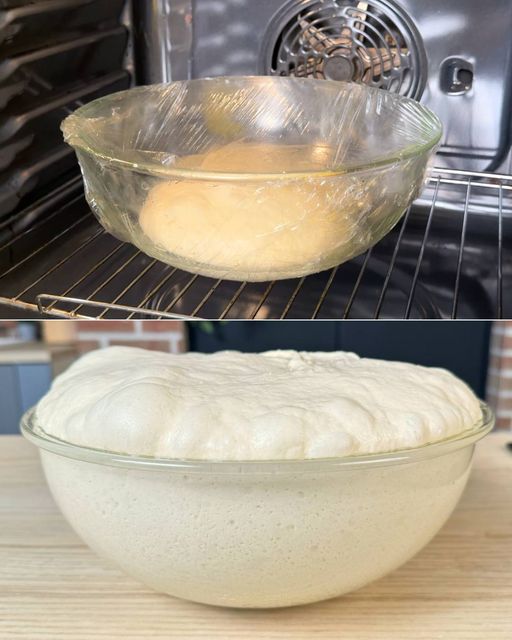ADVERTISEMENT
Or Open button (>) and don’t forget to SHARE with your Facebook friends
2. Using a Sourdough Starter
Sourdough is naturally leavened with wild yeast and bacteria from the environment. If you’re using a sourdough starter, the process is a bit different:
- Feed your starter: Ensure your sourdough starter is active and bubbly. Feed it with equal parts water and flour about 4-6 hours before using it for baking.
- Mix and knead: Combine the sourdough starter with flour, water, and salt to form your dough. Knead it until smooth.
- First rise: Let the dough rise in a warm place, usually for 8-12 hours or overnight. This long, slow fermentation helps develop the signature sourdough flavor.
- Shape and second rise: Shape the dough into your desired loaf or rolls and let it rise for another 2-3 hours before baking.
3. Using Baking Powder or Baking Soda
If you’re making a quick bread like soda bread or a cake-style bread, you’ll be using baking soda or baking powder instead of yeast. These leavening agents release carbon dioxide when they come into contact with moisture, causing the dough to rise.
- Mix dry ingredients: Combine your flour, baking powder or baking soda, salt, and any spices in a bowl.
- Add wet ingredients: Stir in any liquid ingredients (milk, water, eggs, etc.) and combine until just incorporated—do not overmix.
- Bake immediately: Quick breads need to be baked as soon as the dough is mixed, as the leavening agents start working immediately. Skip the long rising time and get it in the oven!
🔥 Baking Your Leavened Bread
Once your dough has completed its final rise, it’s time to bake! Preheat your oven to the appropriate temperature (usually between 375°F and 450°F, depending on the recipe). Bake your bread according to the recipe instructions, and once it’s done, let it cool on a wire rack before slicing.
👩🍳 Final Thoughts: Leavening Made Simple
Understanding where and how to leaven bread is key to mastering the art of bread baking. Whether you’re using yeast, sourdough starter, or a quick bread leavening agent, following the right leavening techniques and creating the ideal environment for your dough will lead to the best results. With a little patience and practice, you’ll be making delicious, homemade bread with a light, airy crumb and crispy golden crust every time.
So, the next time you bake bread, keep these tips in mind and perfect your leavening process for fluffy, flavorful loaves!
Want more bread-baking tips or have a favorite recipe to share? Let me know! I’m always happy to talk about the wonderful world of baking. 🍞🌿
